Last updated on September 5, 2024
A diving vacation in Ireland? Great plan! You’ll see clear water, lots of fish, anemones and crustaceans, and maybe even seals and dolphins!
Page Contents (click line to jump the text)

Intro
You will also love the rugged coastline with its great islands, cliffs and beaches!
And there are quite a few wrecks off the Irish coast as well.
By the way, the Irish are nice and helpful and the Irish island is really beautiful, and also for the non-diving family a great destination!
Heart what do you want more? But what should you take with you?
I would like to give you some tips and suggestions. I am a PADI AOWD diver and have a lot of cold water experience, both at home and while traveling.
Our second home is in Ireland, where I run a motorcycle rental business in the summer (www.easycruiser.tours). We also have nice guest rooms for travelers of all kinds. We have traveled the Irish island over the years and therefore know it well.
A small disclaimer: Diving equipment is potentially safety-relevant. Therefore, get advice from a diving instructor. I’m not a diving instructor and I’m just sharing my experience here without any obligation.
So here come the packing tips for your diving vacation in Ireland:
Diving in Ireland: Best time to travel, temperatures and diving conditions.
Ireland is located in the Atlantic Ocean. The foothills of the warm Gulf Stream favor the climate on the island and have a balancing effect. Therefore, Ireland is cold but not frosty in winter and warm but not too hot in summer.
Water temperatures are 8-10 degrees in spring and 12-18 degrees in late summer. In winter you can dive, but this is the stormy season when the sea can be very choppy.
Also in summer it can be calm or very rough – the Atlantic is just not the Baltic Sea. But there are many very sheltered bays, so you have a good chance for nice dives in summer, even if it gets more turbulent outside.
The best season for divers is therefore the summer half-year from May to October.
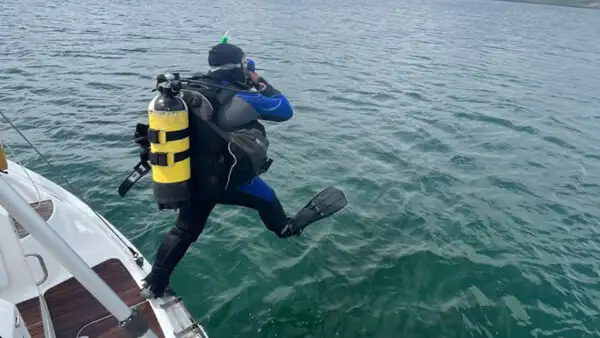
The diving suit for cold water
If you have been diving in warm water so far, you have to rethink now. In late summer and early fall you can wear a good 7 mm wet suit with vest, but I would rather recommend a good semi-dry suit. I cannot recommend thinner wet suits.
Does it make sense to rent a wetsuit from the dive center? Only if it fits really well, otherwise you might get more water flow through the suit than you want and then it will get cold quickly. If in doubt, I would always prefer your own suit in cold water.
The Irish usually still do their Open Water Diver with a semi-dry suit from the dive center and then quickly move on to diving with their own dry suit.
If you don’t have any experience with this, you should take a dry suit course with your dive center. The dry suit is filled with compressed air, just like the buoyancy compensator, and buoyancy with two buoyancy bodies requires some practice at first. But you don’t have to be afraid of it. If you are shown well, it is no problem.
So invest in a good drysuit with underwear, then the water temperature is no longer a big issue. There are membrane drysuits and neoprene drysuits. Membrane suits don’t insulate the temperature much, so you need a rather thick thermal overall under the drysuit. Wetsuits do insulate a bit themselves, and so the warming undergarment can be a bit thinner.
Both membrane and neoprene have their advantages and disadvantages. Get advice from your instructor before you invest a lot of money on the good stuff. I got used to my neoprene skirt very quickly.
Boots, gloves and hood
If your suit doesn’t have a head hood, you should definitely buy a matching neoprene hood separately. I treated myself to a thicker and a thinner hood to be flexible for different water temperatures.
The same goes for the gloves – one set of thin finger gloves and one set of thicker finger gloves will make you flexible. Attention thick gloves: try them on and try to operate your apparatus with them, because it has to work under water.
When it comes to dry suit gloves, there are basically two options: I use separate neoprene gloves that I put on over the arm cuff of the suit. That’s the easier option. But you can also choose dry gloves that attach directly to the suit sleeve with a ring closure. These then become part of the drying system. Teck divers who spend a lot of time in cold water often use this system.
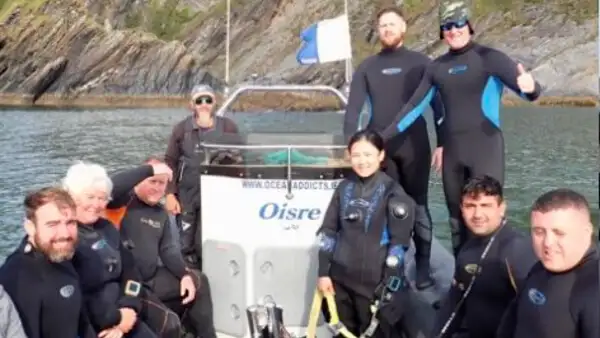
Regulator
Your German regulator comes with a DIN connection for the scuba tank. Abroad, including Ireland, INT cylinder valves and regulators are often used. However, you can easily buy an INT bail adapter for your regulator and then connect it to an INT cylinder.
Warm water divers usually use a 1st stage with two second stages. Here, one is your regulator and the second (yellow) is the Octopus, which is the extra regulator for your buddy in case of emergency.
Cold water divers like to use two redundant systems instead, i.e. two first stages with one 2nd stage each. Why? Even modern regulators can ice up in cold water under certain circumstances, especially under heavy load, as can occur in stress situations with a buddy on the Octopus. If everyone uses their own complete regulator, the danger is less.
If you dive privately with double tanks (like I do), you can screw a regulator to each tank. On vacation you will usually get a 10l or 12l tank with only one valve. With an adapter bridge you can still connect both first stages to one tank.
For both regulators I can only recommend to invest in two high quality cold water suitable regulators and by that I mean both high quality 1st stages and high quality 2nd stages. Of course, you can also spend a lot of money or save – but here it is directly about your safety.
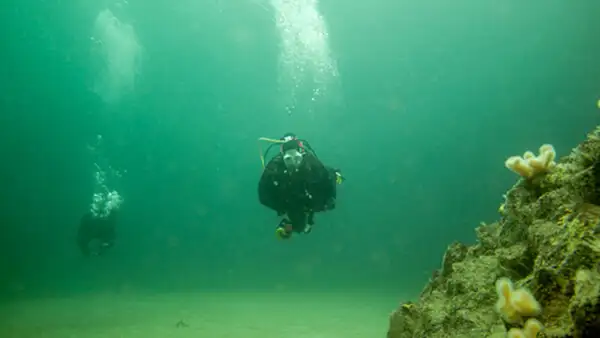
Buoyancy compensator and lead
The drysuit is already a buoyancy compensator and the buoyancy compensator is also a buoyancy compensator. Both seem redundant, so if one fails, you can still help with the other.
The type of buoyancy compensator is largely a matter of taste. I ended up enthusiastically using a wing waistcoat at some point, but a normal waistcoat works well too. It helps if you can store some of the weight in buoyancy compensator pockets and in Velcro pockets (quick-drop pockets) on the waistcoat.
For cold water diving you need a lot of lead (thick suit with a lot of buoyancy), which you can get at any dive centre.
For this you can bring a normal weight belt (with quick release buckle), or a pocket belt. I can highly recommend neoprene pocket harnesses because they are a bit softer on the hips.
You can also put all the lead on the belt or in the waistcoat, but I find the buoyancy and comfort better if you spread it out. Then you can drop some of the lead (and not all) first, if necessary, and don’t shoot up too quickly.

Finimeter, compass and dive computer
If you want to reduce the number of hoses you use, buy a dive computer with a built-in finimeter (tank pressure measurement) and a radio transmitter for the first stage. But then you have to make sure that the battery of the transmitter is always fresh.
Most people will have a finimeter attached to the hose on the first stage. These are also available as 2 or 3 consoles. Then you can add a compass or even a dive computer and have all the instruments in one place.
In my opinion, the 2-stage console with compass works well. A compass should also be included, at least for rough orientation in the water. There are also wrist models if you prefer.
Personally, I like to have my dive computer safely on my wrist. Speedboats in particular sometimes pound through the waves quite a lot and the equipment sometimes takes a few knocks. That’s why I personally don’t have my dive computer in the console on the finimeter, but you can do that however you like.
Which dive computer do you want? Let me show you a few different models. It should be easy to read and therefore large enough. The menu should be easy to understand and it needs good lighting. That’s more important at the beginning than a thousand functions.
Diving mask(s), snorkel and fins
The choice of mask is very individual. It has to fit really well, so you have to try it on. The field of vision should be wide enough in every direction, and there are big differences – so try it out again.
By the way, you can wrap an additional smaller emergency mask around your wrist for the dive. Then you have a backup that you can find blind if the mask strap breaks at 20m and your main mask disappears into the depths.
Do I need a snorkel? Yes! If you have to swim a bit in the swell, you’ll be glad you did. And on your non-diving day, you can go snorkelling for a bit.
What fins for the trip? If you have fins that fit you well and that you are comfortable with, then they are good for travelling. However, we are only talking about closed fins with booties.
Dive lights and dive knives
Ireland offers beautiful coral reefs with anemones, crustaceans and starfish. There is a small shark in one cave and a lobster in the next.
It’s nice to be able to see the colourful diversity in all its glory with a powerful diving torch. The small torches are more useful as a backup, but there are very good and still compact dive lights for travelling.
There are small flashlights for emergencies, which often have a small torch built in. You can hang one of these on the shoulder of your buoyancy compensator and make yourself visible in case of need.
On the other shoulder you can hang a small dive knife. This will help you if you get caught in a fishing line or something similar.
You can also hang a diving knife with straps on your calf and put your snorkel under the straps so that it doesn’t get in the way of your mask.
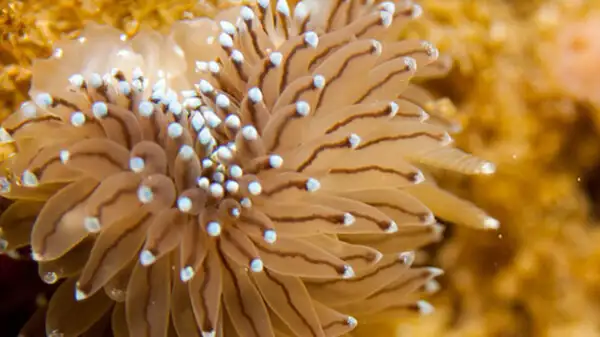
Accessories and safety
I already mentioned the small emergency light with the flashlight.
A whistle on the waistcoat also helps to make yourself heard in an emergency.
On board you can leave a small waterproof bag with food, drink and a small first aid kit.
If the trip is longer, also a pair of sunglasses, sun hat and sunscreen, and a change of clothes. A woolly hat for chilly days on the boat with wet hair should also be included in your luggage.
The gloves also help you not to hurt yourself when getting into the boat or on a rock face.
A buoy with a reel helps to make you visible during deco and on the water surface.
Suitable luggage for diving
If you are travelling by car, this is not an issue. But if you are travelling by plane, you should think about suitable luggage. There are diving backpacks to carry and diving bags with wheels underneath – take a look at the options and choose what seems to make the most sense to you.
You will want to take your dive torch, regulator and computer in your hand luggage – there are handy bags for this too, which do not exceed the flight luggage allowance. Remember to take the appropriate key for the torch. You may have to open it at the security checkpoint. Find out about the baggage regulations in advance.
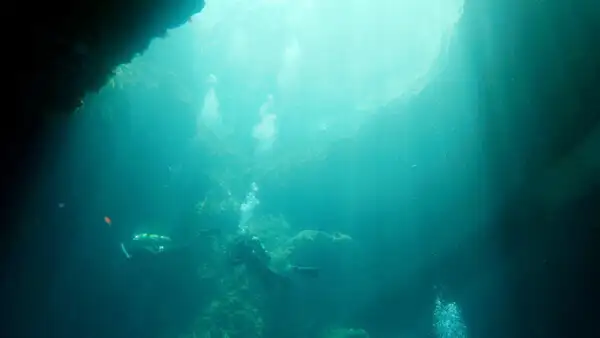
Personal luggage
I would keep it really small. A set of clothes on arrival and some underwear and that’s about it – you can buy almost everything in Ireland.
Important medicines should be in your hand luggage.
Everything else will fit in your diving backpack.
Money, ID, electricity, insurance
You will need your passport to enter Ireland.
The currency in Ireland is the euro, in Northern Ireland the pound. Standard credit cards and debit cards work in most shops, petrol stations and ATMs. To be on the safe side, you should also have some cash with you.
Electricity is 230V, as in Germany. The plugs are English plugs, so you should bring a travel adapter.
Think about additional travel insurance, including diving and repatriation. You never know…
Conclusion
Have I mentioned everything important? I hope I was able to give you a few tips for planning your travel diving equipment.
And with that, I wish you a great planning and a great diving holiday in Ireland!
More interesting articles for you
TIPS FOR (NON-DIVING) DIVERS AND OTHER MARINE ENTHUSIASTS IN IRELAND
WHAT TO SEE ON A DIVE IN IRELAND – MARINE LIFE OFF IRELAND’S SHORES
DEEP WRACKS OFF IRELAND – A PARADISE NOT ONLY FOR TEC DIVERS
Photo credits cover photo: photo by eileen byrne on Unsplash